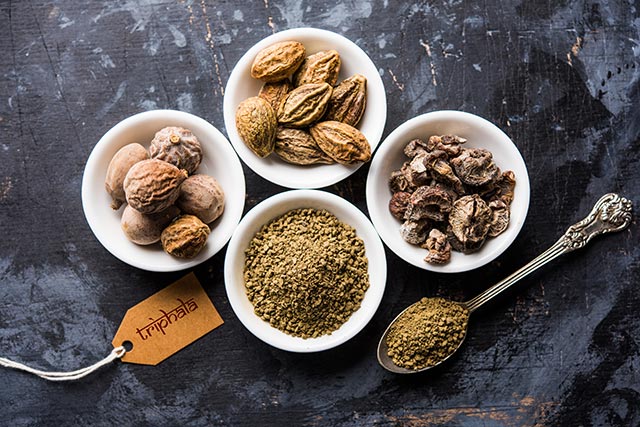Fermented green tea is a novel functional food that can help reduce obesity and regulate triglyceride levels
10/01/2020 / By Evangelyn Rodriguez

The practice of drinking green tea originated in Ancient China, where infusions made with the leaves of Camellia sinensis were consumed for medicinal purposes. Green tea is one of the seven ingredients the Ancient Chinese believed were essential for daily living; hence, they made a habit of drinking green tea to support their health.
Like sipping tea after meals, the practice of fermenting foods was developed thousands of years ago for the purpose of preserving foods. Lactic acid fermentation, which promotes the growth of bacteria to produce probiotic foods like sauerkraut, kimchi, yogurt and sourdough bread, is the most common fermentation method used today. The products of fermentation are said to offer plenty of health benefits, especially for the digestive system and the immune system.
In a recent study, South Korean researchers decided to ferment green tea and explore the possible benefits of combining this superfood with the traditional process used to make health foods. They then tested the effects of an extract obtained from fermented green tea on the differentiation of fat cells (adipogenesis) and the synthesis of fatty acids (lipogenesis). These two processes have a huge impact on metabolic health.
The researchers reported their findings in an article published in the Journal of Medicinal Food.
Fermented green tea can help fight obesity
Previous studies have demonstrated the beneficial effects of green tea on metabolic health. This popular beverage with a slightly bitter taste has the ability to regulate lipid metabolism, which helps alleviate metabolic disorders. Fermented food products, on the other hand, have been shown to improve health by modulating immune response and energy metabolism.
To maximize these benefits, the researchers fermented green tea then treated cultured adipocytes (fat cells) with an extract derived from it. They found that the fermented green tree extract (FGT) inhibited adipogenesis and lipogenesis in adipocytes and also augmented the mRNA expression of fatty acid oxidation-related genes in differentiated myocytes (muscle cells). Fatty acid oxidation is the process by which fatty acids are broken down in the mitochondria to produce energy for cells.
Meanwhile, in mice with diet-induced obesity, FGT reduced body weight and fat mass gain by 69.7 percent and 56.7 percent, respectively. FGT also improved the animals’ circulating triglyceride levels by 32 percent. Similar to what happened in vitro, FGT promoted lipid catabolism — the process by which triglycerides are metabolized into glycerol for glycolysis (glucose breakdown) and fatty acids for fatty acid oxidation — in peripheral tissues. FGT also modulated gut microbial composition. The researchers noted that an imbalance in the gut microbiota is linked to obesity and related metabolic disorders.
Lastly, the researchers attributed the beneficial effects of FGT on lipid metabolism to epigallocatechin gallate (EGCG), the main catechin found in green tea. Based on their findings, they concluded that fermented green tea is a novel functional food that can be used to control obesity and lipid metabolism. (Related: Why green tea is an important supplement for athletes.)
Health benefits of drinking green tea and eating fermented foods
As one of the healthiest drinks on the planet, you can expect green tea to offer plenty of health benefits. Here are some of them: (h/t to Healthline.com)
- Contains phytochemicals with antioxidant, anti-inflammatory and anticancer properties
- Helps improve brain function
- Helps boost metabolism and promotes fat burning
- Can help prevent cancer
- Can help lower the risk of dementia
- Inhibits the growth of oral bacteria that can cause bad breath
- Helps prevent Type 2 diabetes
- Can help prevent cardiovascular disease by lowering bad cholesterol levels
- Promotes longevity
Fermented foods are also great additions to a healthy diet. Here are some of the benefits probiotic-rich foods offer:
- Feeds your good gut bacteria, which helps break down complex carbohydrates
- Promotes gut microbial diversity and balance, which prevents bad bacteria from overpowering the good
- Allows your good gut bacteria to produce vitamins that your body needs
- Can help restore your gut health after you take antibiotics
Green tea and fermented foods are some of the best foods you can eat to support your metabolic health. Besides helping prevent metabolic disorders, these superfoods also offer the added benefit of improving your digestion and immune function. Boost your overall health by enriching your diet with green tea and fermented foods or taking green tea extract and probiotic supplements.
Sources include:
Tagged Under: Adiposity, alternative medicine, fermented foods, fermented green tea, fight obesity, food cures, food is medicine, Green tea, gut microbiota, lipid metabolism, metabolic health, natural cures, natural medicine, phytonutrients, remedies, research
RECENT NEWS & ARTICLES
COPYRIGHT © 2017 REMEDIES NEWS



















